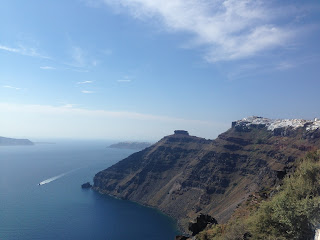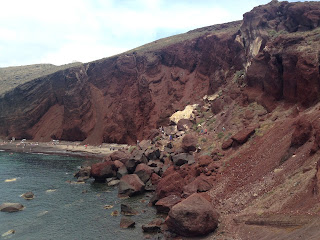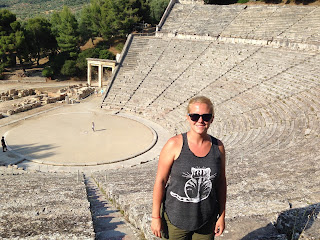Catching yet another train
This isn’t a normal blog post for me. I thought I would take a moment
to reflect on the past six months. My
previous record for time away from the U.S. was broken when we passed the four
month mark. There have been some challenges and it is definitely different to
travel as a married almost 30 year old than to travel as a single 20 year old.
First, I’m older. I like more old people things now and prefer the younger
crowd less. There are more early mornings and fewer late nights. I also have
someone else with me. All the time. Like, all the time. At last count the
longest we have been apart is about 4 hours and that was probably two months
ago. This may sound suffocating to some but we are remarkably good at being
separate while still together. Plus, I would be completely lost without him. I
mean, I could make it but, I wouldn’t want to. Having a partner gives you a
different perspective to consider, someone to laugh at your jokes and listen to
your musings and most importantly someone to remember where you are and where
you are going. Here are a few other observations from our first six months
away:
1.
Budget
We are no strangers to financial planning
but living with a (fairly) strict daily budget really makes you think about
your priorities. Do we stay in a tent and eat out or stay in a hostel and cook
every meal? Do we buy this souvenir, go to this museum, or have a second
helping of Aloo Ghobi? For us, the food typically wins. There have been some
instances that we pick differently, and he goes to the museum or climbs the
tower while I buy some postcards or another coffee. We can design days in line
with our own preferences but with the same goal in mind. It may be unique to
traveling but I think it is a mindset that will be hard to shake when we return
home.
2.
Coffee
Coffee culture is pervasive. It may
manifest in different ways and the beverage may not be coffee, but the majority
of the places we have been have their own version of a coffee culture. Vietnam
is well known for the high amount of coffee consumed. Their version of coffee
involves sweetened condensed milk with a local coffee blend. We drank café sua
da which means iced coffee with milk. In India and China, the coffee culture is
actually a tea culture. In India people sell chai out of thermoses at the train
station and in China EVERYONE carries around a mug with tea leaves and hot
water dispensers are readily available. Greece has the frappe (not a frappuccino)
and Italy has the cappuccino. Finding and enjoying the local beverages has been
one of our favorite experiences over the last six months.
3.
Jeans
I miss jeans. That’s all.
4.
English
Given my profession, I think it is obvious
that I treasure communication. If speaking English is not necessary to function
as a tourist, it is definitely necessary to socially interact with other
travelers. One of our first nights away, in Singapore, I remember seeing a
non-native English speaking Western European talking with a man from China in
the common room of our hostel. How were they able to interact and exchange
stories? In English. It is something I find to be beautiful and perhaps one of
the positive outcomes of globalization. If technology continues to advance in
the area of voice recognition, then perhaps one day people will be able to
communicate in their native languages with the aid of a device. But until then,
English is bridging the divide.
5.
Home
Although “home is not a place” is something
you hear time and time again, I have always had strong attachments to places
and objects. Selling our first home was difficult for me as were all of the
garage sells and craigslist advertisements. During the past six months, we have
seen all types of houses and apartments and different places that people live. There are
different sizes, different types of furniture, and different decorations. These
places are always home to us, even if it is just for a night, and it has nothing
to do with appearances. As incredibly cheesy as it sounds, home really is dependent on attitude and manifests as a
state of mind rather than a location.

























































